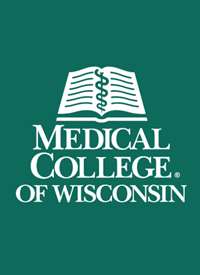Medical College of Wisconsin Photodynamic Therapy for Brain Tumors and Wound Healing
Researchers in the Photobiology Research Laboratory, headed by Harry Whelan, MD, have been involved in the area of photodynamic therapy (PDT) for malignant brain tumors, from canine models of gliomas (Whelan et al., 1993), preclinical binding and photosensitizer localization studies (Schmidt et al., 1996), to clinical trials in both adult and pediatric patients (Quirk et al., 2015). We have studied various photosensitizers and light sources and explored PDT near functional brain tissue (Schmidt et al., 2004). Currently, we are conducting clinical trials in pediatric (Phase I) and adult populations (Phase II). This technique has the potential to significantly improve outcomes for a patient population with generally poor prospects, particularly those with recurrent or unresectable tumors.
The Whelan lab also conducts research into the use of near-infrared light for wound healing. Near-infrared light stimulates improved energy metabolism in the mitochondria (Wong-Riley et al., 2005), which has been hypothesized to accelerate tissue growth and wound healing. In a multi-year investigation, Whelan and colleagues studied the use of near-infrared light to promote healing of mucositis from chemotherapy and radiation used to treat cancer in children. These studies demonstrated that diabetic skin ulcers and other wounds in mice healed much faster when exposed to special LEDs in the lab. Because near-infrared light stimulates improved energy metabolism in the mitochondria, it may also prove useful for treating mitochondrial diseases that affect the brain, eye, heart and muscle (Quirk et al., 2014, 2016). The Whelan lab also been funded by the National Institutes of Health in a study of neurodegenerative disease, traumatic brain injury and other childhood traumas, and has conducted a pilot study of near-infrared light therapy for diabetic macular edema, a form of diabetic eye disease.
Meet Our Team

Wei-Liang Chen
Research Technician

Yu-Wen Lee
Research Technician

Marsha Malloy, RN
Research Nurse II

Brendan Quirk
Research Scientist II

Jeffrey Sugar
Engineer III

Julie Wagner
Graduate Student


